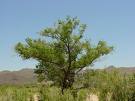Black Willow Tree Information
Images of Black Willow:






Black Willow grows in the following 8 states and provinces:
Arizona, California, Colorado, Maine, Nevada, New Mexico, Texas, UtahInformation about Black Willow:
The Salix Gooddingii is commonly known as the Black Willow, Dudley Willow, Goodding Willow, Valley Willow as well as Western Black Willow.
The currently accepted scientific name of Goodding willow is Salix gooddingii Ball. Recognized varieties are as follows : S. gooddingii var. gooddingii S. gooddingii var. variabilis Ball Some authorities consider S. gooddingii a western variety of S. nigra. Dorn, however, considered them distinct species, citing differences in chemistry .Goodding willow is distributed from northern California to southern Utah, southeast through New Mexico to the Texas panhandle, and west to Arizona and southern California. It is also found in river valleys of northern Mexico .Goodding willow is dominant in many riparian communities of the West, where it frequently codominates with Fremont cottonwood (Populus fremontii) . It is listed as a dominant plant species in the following published classifications: Classification of riparian habitat in the Southwest Southwestern riparian plant communities: site characteristics, tree species distributions, and size-class structures Terrestrial natural communities of California Common plant associates of Goodding willow are Arizona sycamore (Platanus wrightii), mesquite (Prosopis spp.), desertwillow (Chilopsis linearis), and southwestern condalia (Condalia lyciodes) .Some of the information provided here is attributed to:Reed, William R. 1993. Salix gooddingii In: Fire Effects Information System, [Online]. U.S. Department of Agriculture, Forest Service, Rocky Mountain Research Station, Fire Sciences Laboratory (Producer). , available at the USDA Fire Effects Information System (FEIS) website